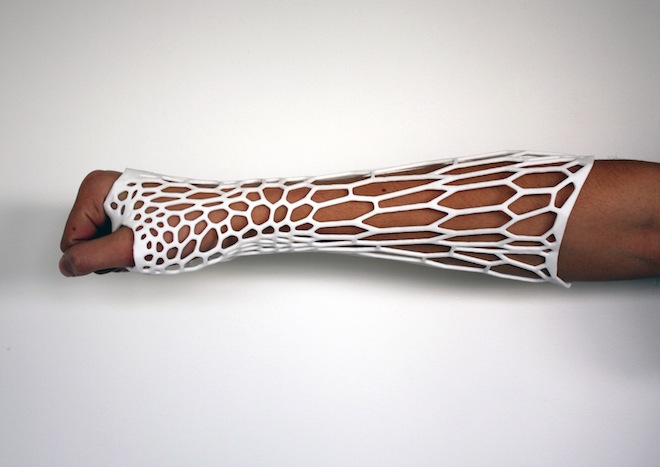Broken Bone? 3D Printing Can Help
Although additive manufacturing has been around since the 1980’s manufacturers and researchers alike are only now getting a sense for just how transformative the technology will be. We’ve already seen 3D printing make its grand entrance in the biomedical field with a polymer-based trachea, skull plate, and 3D-printed organs and stem cells.
 Now, it looks like the technology has come one step closer to giving our skeletal system a hand, with recent advancements in synthetic bone and now a custom-manufactured cast.
Now, it looks like the technology has come one step closer to giving our skeletal system a hand, with recent advancements in synthetic bone and now a custom-manufactured cast.
But from a practical perspective, 3D-printed bone just won’t help everyone. For most injuries, a regular plaster and fiberglass cast is enough to do the trick. But as impressive as our bones’ ability to heal themselves may be, anyone who has had to wear a cast will be quick to talk about just how irritating it can be, citing everything from unscratchable itches to the difficulties of taking a shower.
Jake Evill, a recent graduate of Victoria University in Wellington, New Zealand is one of many familiar with this problem after breaking his hand and being outfitted with a plaster cast for a few months. “I was surprised with how non-user friendly those cumbersome things are,” Evill said. “Wrapping an arm in two kilos of clunky, and soon to be smelly and itchy, plaster in this day and age seemed somewhat archaic to me.”
And even though Evill thought there had to have been a more modern solution available, even if it wasn’t the popular choice. But there wasn’t.
So Evill developed a cast concept that was lightweight, washable, ventilated and recyclable exoskeleton. The shape was inspired by the honeycomb structure of natural bone, with smaller cells near more fragile areas, such as the location of the fracture, and larger cells corresponding with studier regions.
To fit a Cortex cast, patients would undergo the traditional X-ray to identify where the break occurred, along with a 3D scan that will determine the precise dimensions of the cast.
For his concept, Evill sent the final model of the cast to a factory in the Netherlands where it was printed in nylon plastic at a cost of $85.
"After many centuries of splints and cumbersome plaster casts that have been the itchy and smelly bane of millions of children, adults and the aged alike, the world over, we at last bring fracture support into the twenty-first century," says Evill.
Evill is still looking for partners to turn his concept into a commercial reality.










